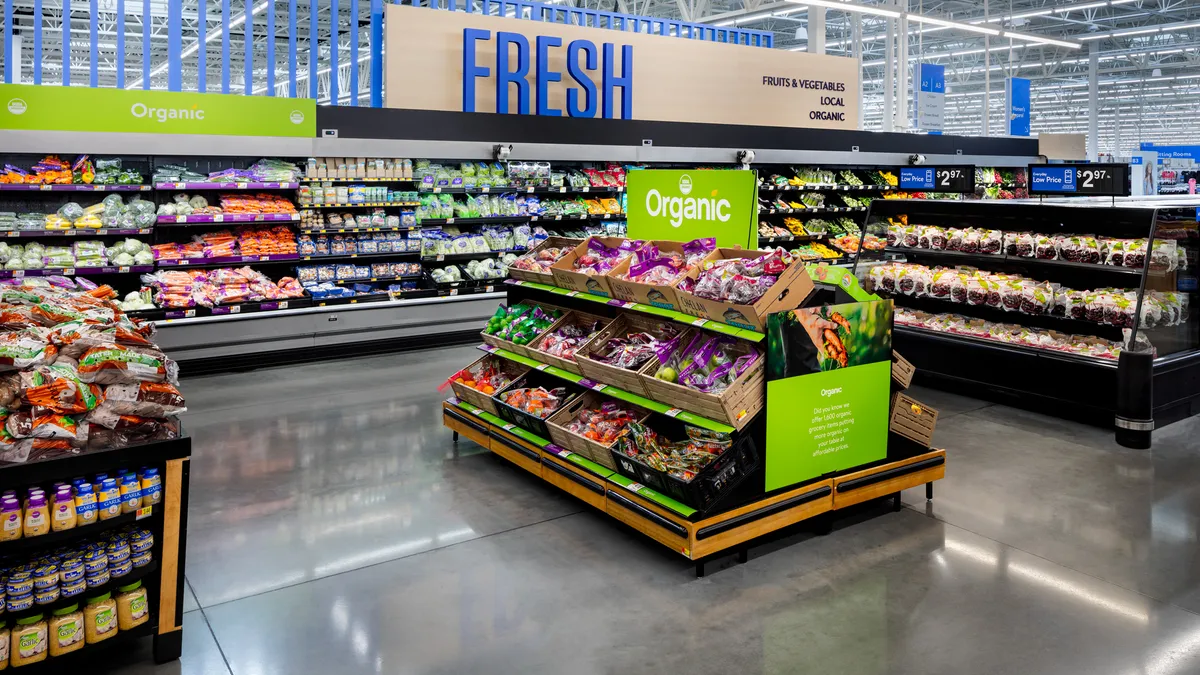Grocery continues to be a key financial driver for Walmart, according to the retailer’s newest annual report released Thursday.
The key business segment brought in $276 billion in net sales for Walmart U.S. for its fiscal year 2025, which ended Jan. 31, up 4% and 11% compared to the prior fiscal year and FY 2023, respectively.
Grocery accounted for nearly 60% of Walmart U.S.’s total net sales of $462 billion. That percentage was flat compared to last year but up 1 percentage point from FY 2023.
Walmart credited strong grocery sales as one of the key drivers for robust comparable sales growth for its U.S. business, the report noted.
“Our leadership in high-frequency food and staples is the starting point for shopping baskets and it keeps our customers coming back,” Walmart CFO John David Rainey said during the retailer’s investors meeting earlier this month.
Rival Target saw slower grocery growth. The category brought in nearly $24 billion in 2024, down 0.3% from 2023 but up 4% compared to 2022, according to Target’s newly released annual report.
Grocery, Walmart’s largest category, continues to grow sales
Meanwhile, general merchandise — Walmart’s second-largest category behind grocery — saw net sales slip over the past three fiscal years, ending FY 2025 at $113.9 billion, slightly down from the same period a year ago and down almost 4% from FY 2023. Health and wellness, which comprises about 13% of Walmart U.S.’s net sales, increased sales by about 33% on the two-year stack.
Along with grocery growth, Walmart noted in its annual report that e-commerce sales have steadily increased over the last three fiscal years, hitting $79 billion in FY 2025, up nearly 49% from two years ago. While Walmart did not break down grocery sales across its stores and online, the retailer’s top executives have repeatedly told investors that the company is focused on an omnichannel strategy that blends online and in-store fulfillment to meet a wide range of consumer needs.
Similarly, Sam’s Club’s U.S. segment has seen grocery and e-commerce sales increase over the last three fiscal years as its overall net sales also climbed. Grocery — the largest category for the club retailer — achieved approximately $60 billion in net sales in FY 2025, up 13% from two years ago, while e-commerce totaled $12 billion, up 44% on a two-year stack.
Walmart is fattening its grocery sales at the expense of traditional supermarkets. Walmart accounted for 21% of the market share among grocery retailers for the last 12 months ending March 31, up slightly from two years ago, according to newly released data from Numerator. By comparison, Kroger and Costco each accounted for just under 9%, while Albertsons claimed 5% and Publix just over 4%.
Correction: A previous version of this story misstated Walmart U.S.'s total net sales for fiscal 2025. The company brought in $462 billion.










